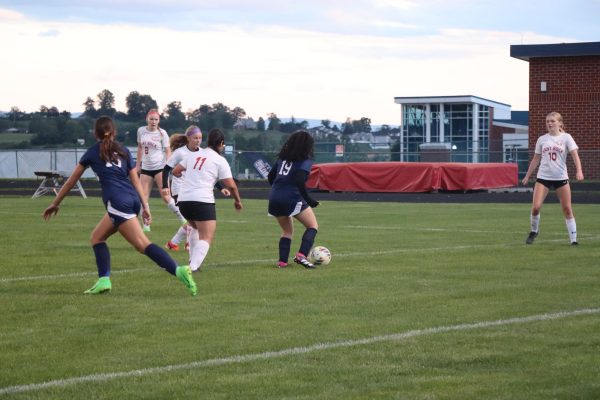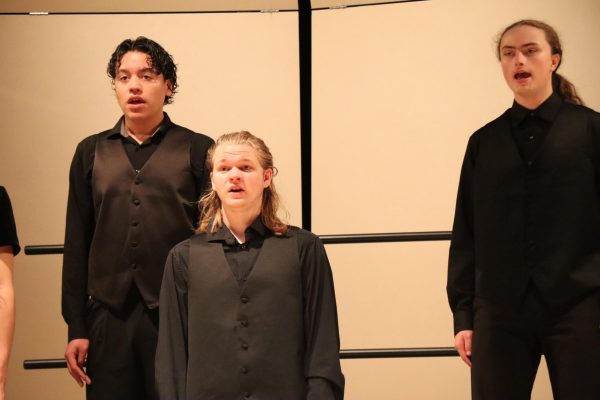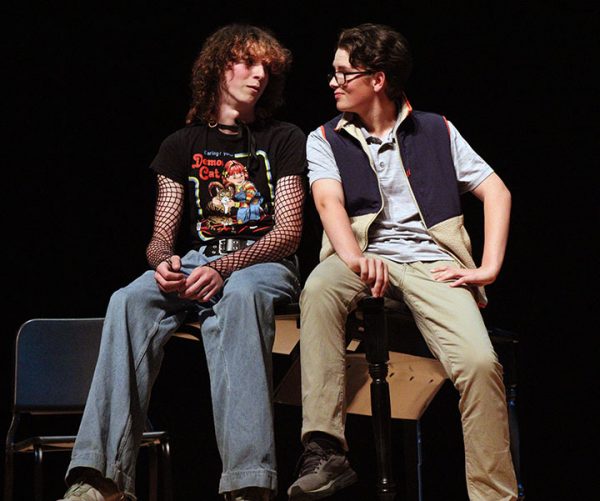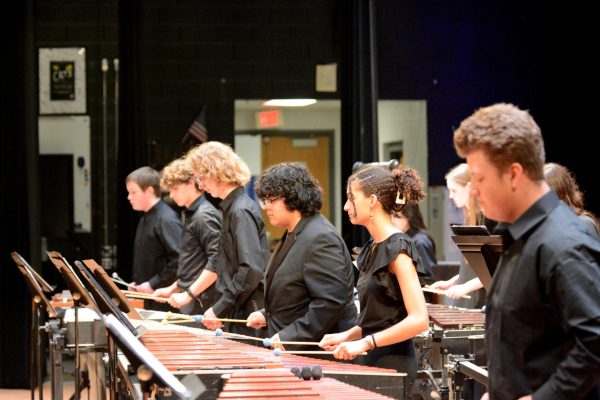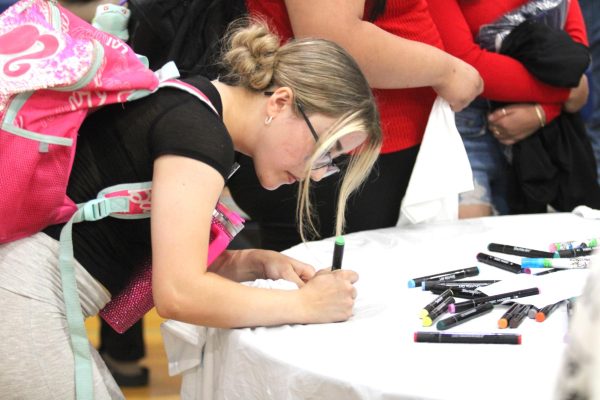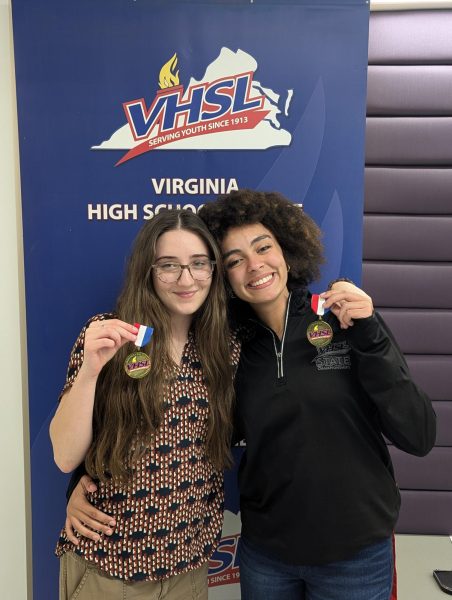STEM students take prototypes to Bluestone kindergarteners
Shouts of, “I like the pink one!” and, “My turn! My turn!” echoed through the main hallways of Bluestone Elementary School. At the end of the April 17 school day, kindergarten students spilled out of their classrooms and clamored over each other in an attempt to get their turn inside a variety of three different constructions: two teepees and a playhouse.
Volunteer students in the our STEM program were tasked with building special areas for the young children by kindergarten teachers. Sophomore Katie Ramsey, Elementary School Outreach Chairman on the STEM Executive Board, helped organize the high school volunteers and get the process going.
“We had a meeting and we went to Bluestone. We jotted down a couple of their answers [after] we asked them what they wanted,” Ramsey said. “They gave is some dimensions and shapes and we took that into consideration building what we thought would fit their ideas best… [Then], we [went] over to the elementary school to show them, and they [voted] on which one they wanted.”
The purpose of the structures is to provide a safe, quiet space for the students to go if they need to get away from class. Kindergarten teacher Emily Ritchie is helping to incorporate emotional awareness into the children’s educations.
“We really wanted to hone in on the social emotional education for kindergarten students coming in because [they] come in at [such a wide variety of different levels. For everyone, we’re just talking about starting to identify emotions. What does your body do when you’re feeling angry? What are the things that make you angry? What are the things that make you feel better?” Ritchie said. “We started talking about different zones, the red zone, the yellow zone, the green zone and the blue zone, so you sort of have a common language to use for emotional conversations.”
Though STEM designed and built the prototypes, they had previously visited Bluestone to get students’ opinions and ideas. The kids enjoyed working with the high schoolers to plan the project, but the structures are not for play.
“A common solution for when you’re frustrated or when you’re feeling angry is to walk away and take a little break by yourself, and then when you’re ready, to come back to us for the rest of the class period. We were thinking, “Where is a good space for us to go?” And there really wasn’t a good place,” Ritchie said. “Many early childhood classrooms have a quiet space. Getting them to be more involved in building a structure of that nature would, [we thought], be more meaningful for them to design it and really understand what it’s for.”
The structure prototypes STEM brought over all provided room for a student to go inside and be secluded, either by paper or cardboard. The kindergarteners got to try out each one before asking our designers questions ranging from color choices to theoretical projects of sizeable proportions, like whether the wood could be pink to how much it would cost to build a whole house out of cardboard.
“I think it went super well. The end of the day is a little challenging for this age group; it’s been a long day of kindergarten, but they seemed really excited to see the structures,” Ritchie said “I think they’re going to be happy with any of them that [STEM] made, and they look very much like the designs we saw in the journals, so I think it was well received.”




